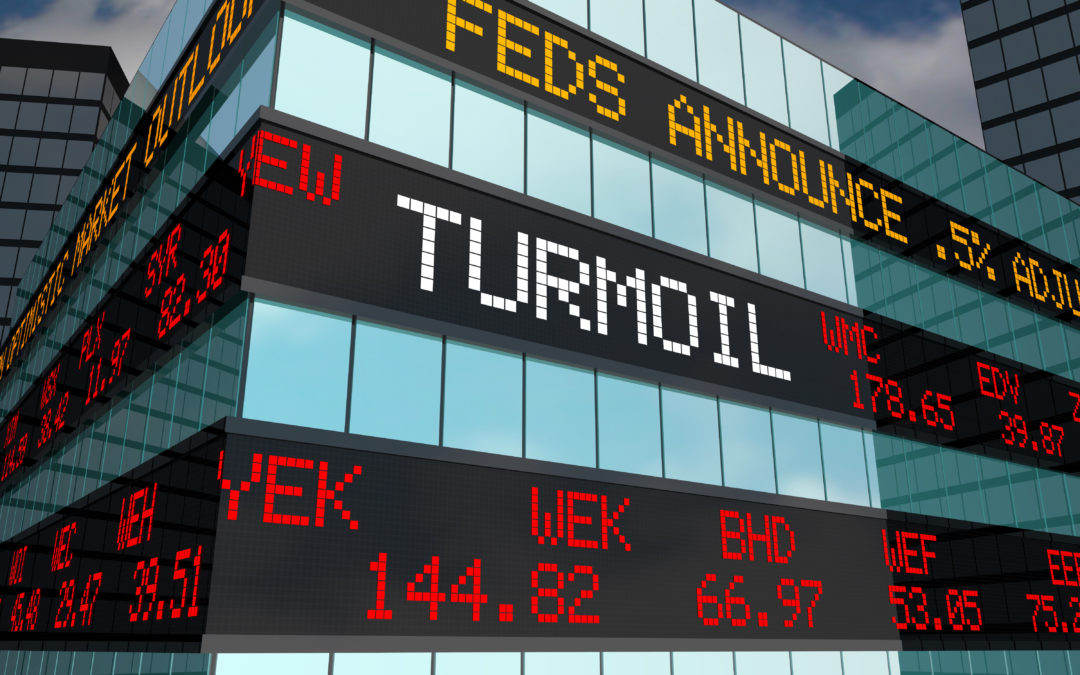Stock Market Volatility: Are Investors Ignoring The Warning Signs?

Table of Contents
Understanding Stock Market Volatility
Stock market volatility refers to the rate and extent of price fluctuations in the market. It's essentially a measure of how much and how quickly stock prices change over time. High stock market volatility translates to increased risk for investors, making it harder to predict returns and potentially leading to significant losses in the short term. The impact of volatility varies depending on the investment horizon. Short-term volatility, measured over days or weeks, can be extremely disruptive, while long-term volatility, observed over months or years, is often less impactful for long-term investors.
Historical examples of high volatility offer valuable lessons. The 2008 financial crisis and the dot-com bubble burst are prime examples of periods marked by extreme market instability, showcasing the devastating effects that significant stock market volatility can have on investor portfolios.
- Increased risk of capital loss: Sudden and sharp price drops can wipe out significant portions of an investor's capital.
- Difficulty in predicting market movements: Volatility makes it significantly more challenging to forecast future price trends, increasing uncertainty.
- Impact on investor sentiment and decision-making: Fear and panic can drive irrational investment decisions during periods of high volatility.
Warning Signs of Increased Stock Market Volatility
Several indicators can signal an increase in impending stock market volatility. Understanding and monitoring these warning signs allows investors to adjust their strategies and potentially mitigate risk.
High Debt Levels
High levels of corporate and consumer debt are often strongly correlated with increased market volatility. Excessive debt makes businesses and individuals more vulnerable to economic shocks. When economic conditions deteriorate, the risk of defaults rises sharply, potentially triggering a chain reaction impacting the overall market stability.
- Rising corporate bankruptcies: High debt burdens can lead to business failures, sending ripple effects throughout the market.
- Increased loan defaults: As borrowers struggle to repay loans, lenders face losses, which can trigger financial instability.
- Strained consumer spending: High debt levels limit consumer spending, impacting economic growth and putting pressure on businesses.
Geopolitical Uncertainty
International conflicts, political instability, and unexpected global events are significant drivers of stock market volatility. Uncertainty about the future often leads to market corrections as investors seek safer investments.
- Trade wars and sanctions: Protectionist trade policies and international sanctions can disrupt global supply chains and negatively impact business performance.
- Political upheavals: Political instability in key regions or countries can create uncertainty and trigger market reactions.
- Global health crises: Pandemics and other widespread health crises can severely disrupt economies and lead to increased market volatility.
Inflation and Interest Rate Hikes
Inflation erodes purchasing power, while rising interest rates increase borrowing costs for businesses and consumers. These factors can slow economic growth, impacting corporate profitability and investor sentiment. This combination often leads to increased stock market volatility.
- Reduced consumer purchasing power: Inflation makes goods and services more expensive, reducing consumer spending and impacting business revenues.
- Increased borrowing costs for businesses: Higher interest rates make it more expensive for businesses to borrow money, hindering investment and expansion.
- Potential for economic slowdown: The combined impact of inflation and higher interest rates can lead to a slowing economy, which usually translates to increased market uncertainty.
Overvalued Asset Prices
Asset bubbles, characterized by inflated asset prices not supported by fundamental factors, are a significant warning sign of potential market corrections and increased volatility. These bubbles are often fueled by speculative investment activity and excessive optimism.
- High price-to-earnings ratios (P/E): High P/E ratios suggest that stocks are overvalued compared to their earnings, indicating potential for a price correction.
- Speculative investment activity: When investment decisions are driven primarily by speculation rather than fundamental analysis, markets become susceptible to sharp reversals.
- Lack of fundamental support for asset prices: When asset prices are not justified by underlying economic fundamentals, they are vulnerable to a decline.
Strategies for Navigating Stock Market Volatility
While stock market volatility cannot be entirely avoided, investors can employ several strategies to mitigate its impact and navigate the challenges effectively.
Diversification
A well-diversified portfolio across different asset classes (stocks, bonds, real estate, etc.) and sectors helps to reduce the impact of volatility. By spreading investments across various assets, the negative impact of a downturn in one area is lessened by the potential positive performance in others.
Risk Management
Employing risk management techniques such as stop-loss orders (automatic sell orders triggered when a stock price falls to a predetermined level) can help limit potential losses during periods of heightened volatility. Regular portfolio rebalancing can also assist in risk mitigation.
Long-Term Investing
A long-term investment horizon is crucial for weathering short-term market fluctuations. While short-term volatility can be disruptive, long-term investors tend to benefit from the overall upward trend of the market over time.
Professional Advice
Seeking guidance from a qualified financial advisor can be invaluable. An advisor can provide personalized advice tailored to an investor’s risk tolerance, financial goals, and investment timeline, helping them navigate the complexities of stock market volatility effectively.
Conclusion
Stock market volatility is an inherent aspect of investing, and understanding its drivers is paramount. High debt levels, geopolitical uncertainty, inflation, interest rate hikes, and overvalued asset prices are key warning signs that investors should carefully monitor. By employing strategies like diversification, implementing risk management techniques, adopting a long-term investment approach, and seeking professional advice, investors can significantly improve their ability to navigate stock market volatility and achieve their long-term financial goals. Don't ignore the warning signs – take proactive steps to protect your portfolio and navigate the challenges of stock market volatility today!

Featured Posts
-
 Jan 6 Witness Cassidy Hutchinson Announces Fall Memoir Release
Apr 22, 2025
Jan 6 Witness Cassidy Hutchinson Announces Fall Memoir Release
Apr 22, 2025 -
 Razer Blade 16 2025 Review Balancing Ultra Performance With Ultra Portability And Cost
Apr 22, 2025
Razer Blade 16 2025 Review Balancing Ultra Performance With Ultra Portability And Cost
Apr 22, 2025 -
 Navigate The Private Credit Boom 5 Key Dos And Don Ts
Apr 22, 2025
Navigate The Private Credit Boom 5 Key Dos And Don Ts
Apr 22, 2025 -
 La Landlord Price Gouging A Selling Sunset Star Speaks Out After Recent Fires
Apr 22, 2025
La Landlord Price Gouging A Selling Sunset Star Speaks Out After Recent Fires
Apr 22, 2025 -
 The Karen Read Case A Year By Year Timeline Of Legal Proceedings
Apr 22, 2025
The Karen Read Case A Year By Year Timeline Of Legal Proceedings
Apr 22, 2025
